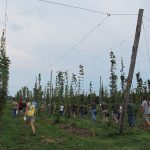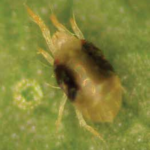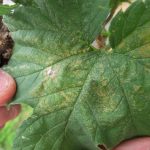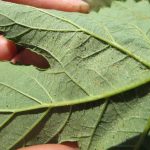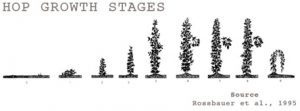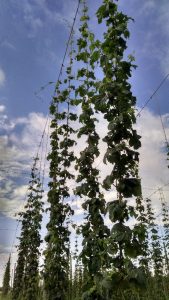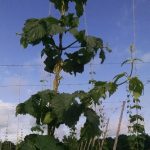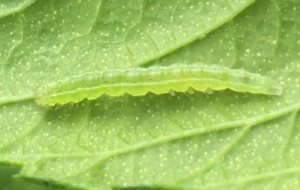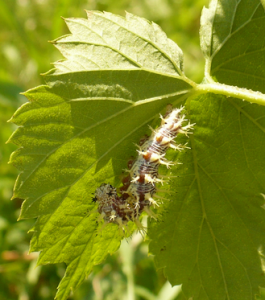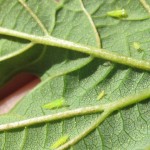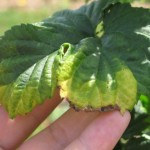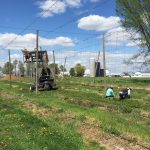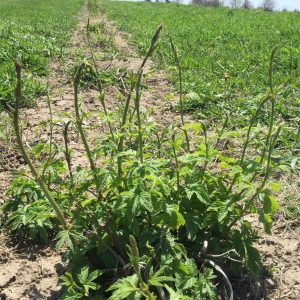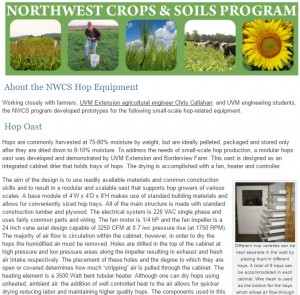It’s almost harvest time, folks! With such a hot, dry year, be prepared for some varieties to be ready earlier than usual. Remember to check the labels on any pesticides you are using to allow the appropriate window between the last pesticide application and harvest.
Have you seen our fact sheet on determining when hops are ready for harvest? Check it out here: http://www.uvm.edu/extension/cropsoil/wp-content/uploads/Hop-Harvest-Determination-factsheet.pdf.
Also, we have a handy calculator for dry matter/moisture content math: http://www.uvm.edu/extension/agriculture/engineering/?Page=hopscalc.html.
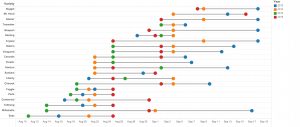
In addition, we put together a chart of harvest dates in our hopyard over the past four years. If you’re located in the Northeast, this might help you ballpark your harvest window.
Note that we use two opposite terms at hop harvest time–dry matter and moisture content. We harvest at a dry matter of 22 to 27% (that’s 73 to 78% moisture). Then, when we dry hops after harvest, we dry them to a moisture content of 8 to 10% (that’s 90 to 92% dry matter). This interchange of terms might seem confusing but that’s just what is used throughout the industry. One more note on dry matter: Since dry matter is the opposite of moisture content, dry matter will increase as hops mature in the field. So if you measure your hops at 18% dry matter, they’re not ready yet!
Good luck with harvest and remember to keep calm and hop on!


